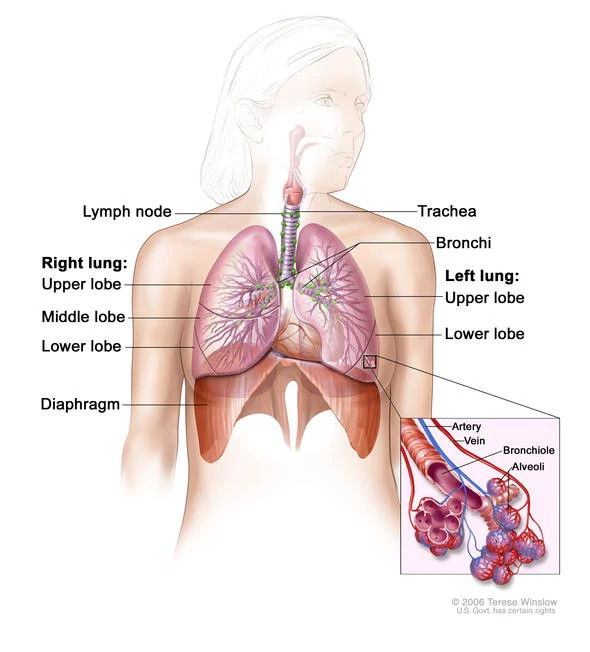What Is Small Cell Lung Cancer?
Small cell lung cancer affects about 15% of lung cancer patients. Small cell lung cancer usually starts in the breathing tubes (bronchi) in the center of the chest. The cancer cells are small, but they usually grow very quickly and create large tumors. These tumors often spread rapidly (metastasize) to other parts of the body, including the brain, liver, and bone.
At Dana-Farber Brigham Cancer Center, our dedicated thoracic team of radiologists, pathologists, medical oncologists, surgeons and radiation oncologists work together to determine:
- Whether you have cancer at all (there are other disorders that can look like cancer but have very different treatments and outcomes);
- What type of cancer you have;
- What set of treatments are likely to be most effective for your individual cancer.

Risk Factors for Small Cell Lung Cancer
Anything that increases a person's chance of developing a disease is called a risk factor. Having a risk factor does not mean that you will get cancer; not having risk factors doesn't mean that you will not get cancer.
Risk factors for small cell lung cancer include:
- Smoking cigarettes, pipes, or cigars, now or in the past
- Being exposed to secondhand smoke
- Being exposed to asbestos or radon
Symptoms of Small Cell Lung Cancer
Sometimes lung cancer does not cause any symptoms and is found during a routine chest X-ray.
Small cell lung cancer is often asymptomatic initially. As a result, it often spreads to other parts of the lung or to other organs before it is detected. As the cancer progresses, possible signs and symptoms include coughing, chest pain, and shortness of breath.
Consult your doctor if any of the following occur:
- A cough that doesn't go away
- Shortness of breath or trouble breathing
- Chest pain that doesn't go away
- Wheezing
- Coughing up blood
- Hoarseness
- Swelling of the face and neck
- Loss of appetite
- Weight loss for no known reason
- Unusual tiredness